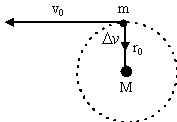A bag contains 21 balls of 6 different colours, there being 6 of the first colour, 5 of the second, 4 of the third and so on. Show that the number of different selections of of 6 balls that can be made from the bag is 259.
Submission Closed
Cracked By:
1. Rajat Goel, 12th, Lucknow Public College, Lucknow.
2. Aditya Gopi, 12th, C.M.R N.P.S, Bangalore.
3. Gaurav Kalra, 11th, S. M. Arya Public School, New Delhi.
4. Ankit Jain, XI, Maharaja Sawai Man Singh Vidyalaya, JAIPUR.
5. Ankul Garg, XI, Bal Bharti Public School, Rohini, Delhi.
Solutions:
1. Ankul's Solution:
2. Gaurav's Solution:
.pdf file is attached.

